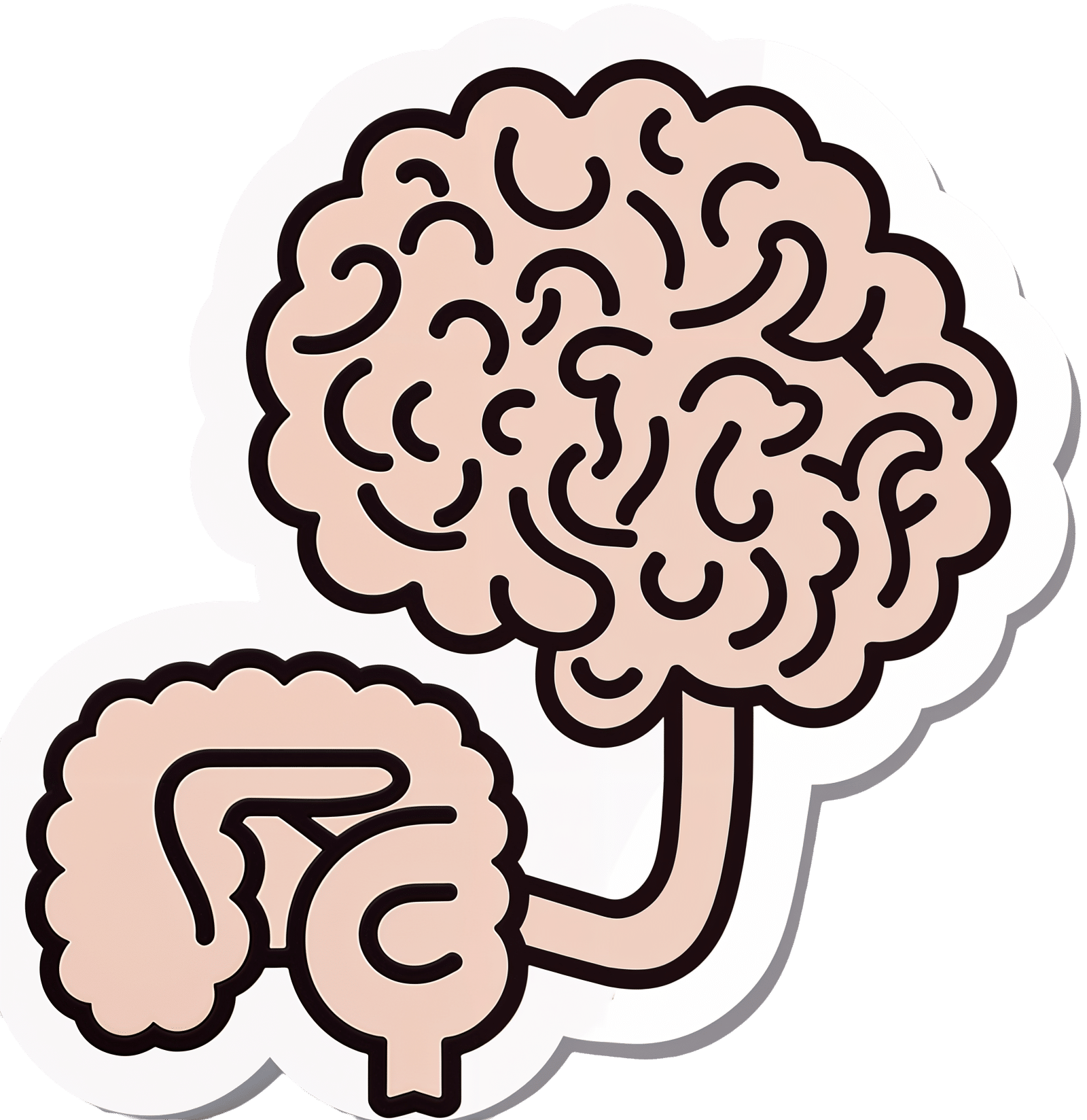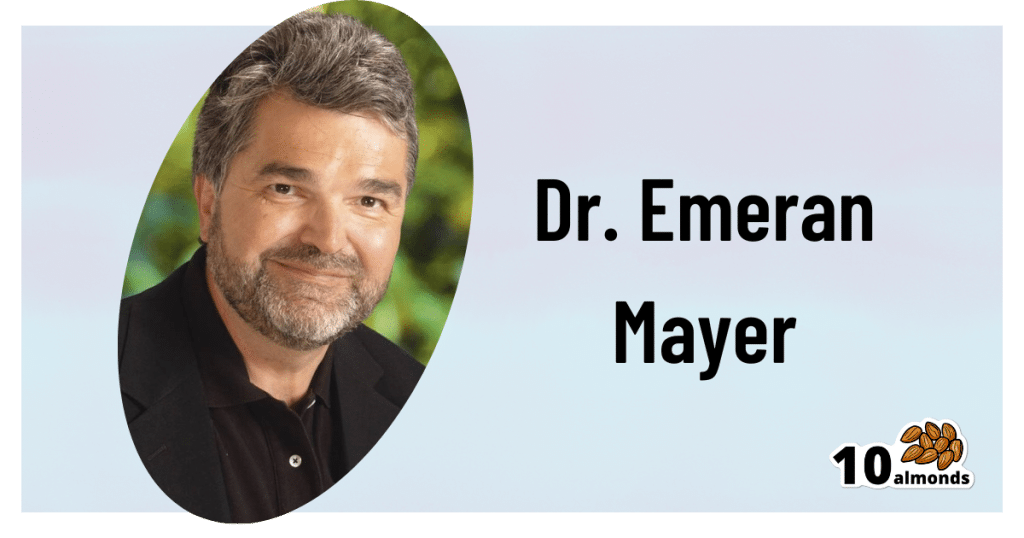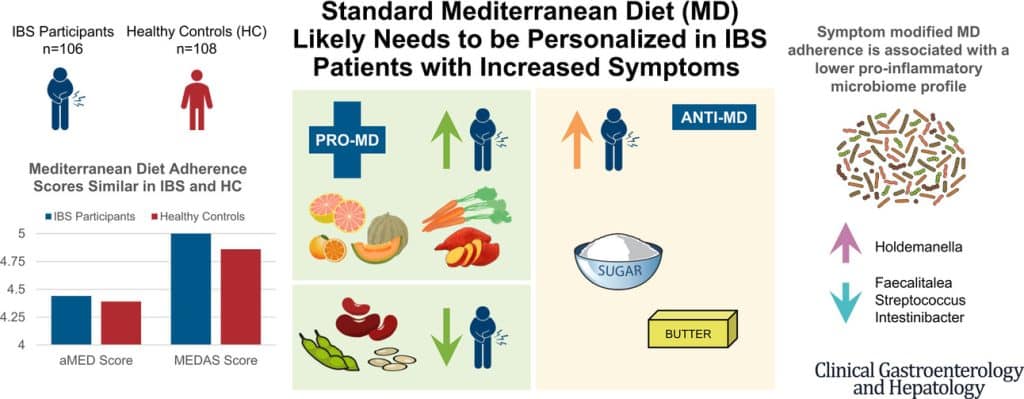
TED-x | Sugar Is Not A Treat
10almonds is reader-supported. We may, at no cost to you, receive a portion of sales if you purchase a product through a link in this article.
Dr. Jody Stanislaw offers a reframe:
Not so sweet
The pancreas isn’t an organ that most people think about a lot, but it regulates blood sugar levels by releasing insulin as needed. Overworking the beta cells in the pancreas that do this, can lead to their burnout, which contributes to prediabetes and type 2 diabetes.
If, like Dr. Stanislaw, you already have Type 1 Diabetes (an autoimmune condition usually diagnosed in early childhood and unrelated to what one has or hasn’t been eating), then your pancreas is already not doing much, or rather, it’s too busy fighting itself to actually do its job. This means that taking exogenous insulin (i.e., from the pharmacy rather than from your dysfunctional pancreas) will be necessary for survival. Most people with T1D will have an insulin pump if possible, to provide insulin as needed. Others will rely on injections.
So, does that mean that T1D is a free pass on the diabetes-related health risks of sugar, since after all, you already have diabetes anyway?
Nope, no such luck. Because in the case of T1D, if you then get insulin resistance on top of the fact you don’t make your own insulin, then the insulin that you are taking will stop working, and ultimately you will die. So, that’s pretty important to avoid!
Thus, Dr. Stanislaw has strong opinions on diet in this regard, and she recommends her own protocol regardless of whether you are diabetic or not:
- Avoid refined carbs (e.g. bread, pasta, or foods with added sugars).
- Start the day with protein-rich foods for balanced blood sugar.
- Drink water to curb sugar cravings caused by dehydration.
- Use low-carb substitutes (e.g. cauliflower pizza crust, zucchini noodles, etc).
While Dr. Stanislaw does recommend an 80:20 approach to eating in general (80% healthy foods, 20% indulgences), she does strongly suggest not putting sugar even into the “indulgences” 20%, because a) a diet of 20% sugar is not at all good, and b) the dangers of sugar consumption are particularly high, so it is better reframed not as a treat to be enjoyed, but rather as a threat to be avoided.
For more on all of this, enjoy:
Click Here If The Embedded Video Doesn’t Load Automatically!
Want to learn more?
You might also like to read:
Take care!
Don’t Forget…
Did you arrive here from our newsletter? Don’t forget to return to the email to continue learning!
Recommended
Learn to Age Gracefully
Join the 98k+ American women taking control of their health & aging with our 100% free (and fun!) daily emails:
-
The Brain-Gut Highway: A Two-Way Street
10almonds is reader-supported. We may, at no cost to you, receive a portion of sales if you purchase a product through a link in this article.
The Brain-Gut Two-Way Highway
This is Dr. Emeran Mayer. He has the rather niche dual specialty of being a gastroenterologist and a neurologist. He has published over 353 peer reviewed scientific articles, and he’s a professor in the Departments of Medicine, Physiology, and Psychiatry at UCLA. Much of his work has been pioneering medical research into gut-brain interactions.
We know the brain and gut are connected. What else does he want us to know?
First, that it is a two-way interaction. It’s about 90% “gut tells the brain things”, but it’s also 10% “brain tells the gut things”, and that 10% can make more like a 20% difference, if for example we look at the swing between “brain using that 10% communication to tell gut to do things worse” or “brain using that 10% communication to tell gut to do things better”, vs the midpoint null hypothesis of “what the gut would be doing with no direction from the brain”.
For example, if we are experiencing unmanaged chronic stress, that is going to tell our gut to do things that had an evolutionary advantage 20,000–200,000 years ago. Those things will not help us now. We do not need cortisol highs and adrenal dumping because we ate a piece of bread while stressed.
Read more (by Dr. Mayer): The Stress That Evolution Has Not Prepared Us For
With this in mind, if we want to look after our gut, then we can start before we even put anything in our mouths. Dr. Mayer recommends managing stress, anxiety, and depression from the head downwards as well as from the gut upwards.
Here’s what we at 10almonds have written previously on how to manage those things:
- No-Frills, Evidence-Based Mindfulness
- How To Set Anxiety Aside
- The Mental Health First-Aid You’ll Hopefully Never Need
Do eat for gut health! Yes, even if…
Unsurprisingly, Dr. Mayer advocates for a gut-friendly, anti-inflammatory diet. We’ve written about these things before:
…but there’s just one problem:
For some people, such as with IBS, Crohn’s, and colitis, the Mediterranean diet that we (10almonds and Dr. Mayer) generally advocate for, is inaccessible. If you (if you have those conditions) eat as we describe, a combination of the fiber in many vegetables and the FODMAPs* in many fruits, will give you a very bad time indeed.
*Fermentable Oligo-, Di-, Monosaccharides And Polyols
Dr. Mayer has the answer to this riddle, and he’s not just guessing; he and his team did science to it. In a study with hundreds of participants, he measured what happened with adherence (or not) to the Mediterranean diet (or modified Mediterranean diet) (or not), in participants with IBS (or not).
The results and conclusions from that study included:
❝Among IBS participants, a higher consumption of fruits, vegetables, sugar, and butter was associated with a greater severity of IBS symptoms. Multivariate analysis identified several Mediterranean Diet foods to be associated with increased IBS symptoms.
A higher adherence to symptom-modified Mediterranean Diet was associated with a lower abundance of potentially harmful Faecalitalea, Streptococcus, and Intestinibacter, and higher abundance of potentially beneficial Holdemanella from the Firmicutes phylum.
A standard Mediterranean Diet was not associated with IBS symptom severity, although certain Mediterranean Diet foods were associated with increased IBS symptoms. Our study suggests that standard Mediterranean Diet may not be suitable for all patients with IBS and likely needs to be personalized in those with increased symptoms.❞
In graphical form:
And if you’d like to read more about this (along with more details on which specific foods to include or exclude to get these results), you can do so…
- The study itself (full article): The Association Between a Mediterranean Diet and Symptoms of Irritable Bowel Syndrome
- Dr. Mayer’s blog (lay explanation): The Benefits of a Modified Mediterranean Diet for Irritable Bowel Syndrome
Want to know more?
Dr. Mayer offers many resources, including a blog, books, recipes, podcasts, and even a YouTube channel:
Share This Post
-
Red Bell Peppers vs Tomatoes – Which is Healthier?
10almonds is reader-supported. We may, at no cost to you, receive a portion of sales if you purchase a product through a link in this article.
Our Verdict
When comparing red bell peppers to tomatoes, we picked the peppers.
Why?
In terms of macronutrients, these two fruits-that-get-used-as-vegetables are similar in most respects; they’re mostly water, negligible protein and fat, similar amounts of carbs, even a similar carb breakdown (mostly fructose and glucose). One thing that does set them apart is that peppers* have about 2x the fiber, which difference results in peppers having the lower Glycemic Index—though tomatoes are quite low in GI too.
*for brevity we’re just going to write “peppers”, but we are still talking about sweet red bell peppers throughout. This is important, as different color peppers have different nutrient profiles.
In the category of vitamins, peppers have much more of vitamins A, B1, B2, B3, B5, B6, B9, C, and E. In contrast, tomatoes have more vitamin K. An easy win for peppers.
When it comes to minerals, the margins are narrower, but peppers have more iron, zinc, and selenium, while tomatoes have more calcium and copper. They’re approximately equal on other minerals they both contain, making this category a slight (3:2) win for peppers.
As for phytochemical benefits, both are good sources of lycopene (both better when cooked) and other carotenes (for example lutein), and both have an array of assorted flavonoids.
All in all, a win for peppers, but both are great!
Want to learn more?
You might like to read:
- Brain Food? The Eyes Have It!
- Bell Peppers: A Spectrum Of Specialties
- Lycopene’s Benefits For The Gut, Heart, Brain, & More
Take care!
Share This Post
-
Sleeping on Your Back after 50; Yay or Nay?
10almonds is reader-supported. We may, at no cost to you, receive a portion of sales if you purchase a product through a link in this article.
Sleeping Differently After 50
Sleeping is one of those things that, at any age, can be hard to master. Some of our most popular articles have been on getting better sleep, and effective sleep aids, and we’ve had a range of specific sleep-related questions, like whether air purifiers actually improve your sleep.
But perhaps there’s an underlying truth hidden in our opening sentence…is sleeping consistently difficult because the way we sleep should change according to our age?
Inspired by Brad and Mike’s video below (which was published to their 5 million+ subscribers!), there are 4 main elements to consider when sleeping on your back after you’ve hit the 50-year mark:
- Degenerative Disk Disease: As you age, your spine may start to show signs of wear and tear, which directly affects comfort while lying on your back.
- Sleep Apnea and Snoring: Sleep Apnea and snoring become more of an issue with age, and sleeping on your back can exacerbate these problems; when you sleep on your back, the soft tissues in your throat, as well as your tongue, “fall back” and partly obstruct your the airway.
- Spinal Stenosis: Spinal Stenosis–the often-age-related narrowing of your spinal canal–can put pressure on the nerves that travel through the spine, which equally makes back-sleeping harder.
- GERD: The all-too-familiar gastroesophageal reflux disease can be more problematic when lying flat on your back, as doing so can allow easy access for stomach acid to move upwards.
Alternatives to Back Sleeping
Referencing the Mayo Clinic’s Sleep Facility’s director, Dr. Virend Somers, today’s video suggests a simple solution: sleeping on your side. The video goes into a bit more detail but, as you know, here at 10almonds we like to cut to the chase.
Modifications for Back Sleeping
If you’re a lifelong back-sleeping and cannot bear the idea of changing to your side, or your stomach, then there are a few modifications that you can make to ease any pain and discomfort.
Most solutions revolve around either leg wedges or pillow adjustments. For instance, if you’re suffering from back pain, try propping your knees up. Or if GERD is your worst enemy, a wedge pillow could help keep that acid down.
As can be expected, the video dives into more detail:
How was the video? If you’ve discovered any great videos yourself that you’d like to share with fellow 10almonds readers, then please do email them to us!
Share This Post
Related Posts
-
Moore’s Clinically Oriented Anatomy – by Dr. Anne Argur & Dr. Arthur Dalley
10almonds is reader-supported. We may, at no cost to you, receive a portion of sales if you purchase a product through a link in this article.
Imagine, if you will, Grey’s Anatomy but beautifully illustrated in color and formatted in a way that’s easy to read—both in terms of layout and searchability, and also in terms of how this book presents anatomy described in a practical, functional context, with summary boxes for each area, so that the primary concepts don’t get lost in the very many details.
(In contrast, if you have a copy of the famous Grey’s Anatomy, you’ll know it’s full of many pages of nothing but tiny dense text, a large amount of which is Latin, with occasional etchings by way of illustration)
Another way in which this does a lot better than the aforementioned seminal work is that it also describes and discusses very many common variations and abnormalities, both congenital and acquired, so that it’s not just a text of “what a theoretical person looks like inside”, but rather also reflects the diverse reality of the human form (we weren’t made identically in a production line, and so we can vary quite a bit).
The book is, of course, intended for students and practitioners of medicine and related fields, so what good is it to the lay person? Well, if you ask the average person where the gallbladder is and why we have one, they will gesture in the general direction of the abdomen, and sort of shrug sheepishly. You don’t have to be that person 🙂
Bottom line: if you’d like to know your acetabulum from your zygomatic arch, this is the best anatomy book this reviewer has yet seen.
Click here to check out Moore’s Clinically Oriented Anatomy, and prepare to be amazed!
PS: this one is expensive, but consider it a fair investment in your personal education, if you’re serious about it!
Don’t Forget…
Did you arrive here from our newsletter? Don’t forget to return to the email to continue learning!
Learn to Age Gracefully
Join the 98k+ American women taking control of their health & aging with our 100% free (and fun!) daily emails:
-
6 Kinds Of Drinks That Hasten Dementia
10almonds is reader-supported. We may, at no cost to you, receive a portion of sales if you purchase a product through a link in this article.
Dr. William Li, most well-known for his diabetes expertise (remember that there are clear associations between diabetes and dementia), discusses drinks you might want to skip:
Here’s to your good health
The 6 kinds of drink are:
- Alcohol which is bad for pretty much everything and this is no exception. Can cause a deficiency of thiamine, brain-shrinking, neuroinflammation, oxidative stress, and resultant neuron damage.
- Soda / diet soda, the former of which is bad for the diabetes-dementia connection, and the latter of which is also usually (depends on the sweetener) harmful to the gut and thus the gut-brain connection.
- Fruit juices, especially if processed, as the high sugar and zero or nearly-zero fiber can lead to insulin resistance, affecting the brain’s energy processing. In particular, fruit juice drinks sweetened with high-fructose corn syrup (HFCS) can accumulated as fat in the brain (due to how the body processes fructose in the absence of fiber to slow it down), impacting cognition.
- Energy drinks, being basically the same as soda / diet soda, just now with added caffeine too.
- [Caffeinated] late-night coffee, can (shocking nobody) disrupt sleep, and chronic sleep deprivation contributes to the build-up of harmful brain plaques.
- Sports drinks, which (unless you’re super-sure about everything on the label; there are some good sports drinks out there) often contain HFCS in the US, along with various other additives that may not always be great for you. Also, the sodium content of electrolyte drinks are fine if you genuinely are actively sweating it out, but otherwise, can lead to high blood pressure, which is itself a dementia risk factor.
Better options include:
- decaffeinated coffee (or coffee enjoyed in the early afternoon)
- green tea
- turmeric-based drinks
Dr. Li mentions turmeric milk drinks, but unfermented dairy is generally inflammatory, so better to make it kefir (fermented milk drink) or plant-based. Or just have a turmeric tea; that works too.
Dr. Li also mentions berry smoothies, which are not nearly as bad as fruit juice, but still not as good as eating whole berries.
For more on all of this, enjoy:
Click Here If The Embedded Video Doesn’t Load Automatically!
Want to learn more?
You might also like to read:
Take care!
Don’t Forget…
Did you arrive here from our newsletter? Don’t forget to return to the email to continue learning!
Learn to Age Gracefully
Join the 98k+ American women taking control of their health & aging with our 100% free (and fun!) daily emails:
-
Dried Apricots vs Dried Prunes – Which is Healthier?
10almonds is reader-supported. We may, at no cost to you, receive a portion of sales if you purchase a product through a link in this article.
Our Verdict
When comparing dried apricots to dried prunes, we picked the prunes.
Why?
First, let’s talk hydration. We’ve described both of these as “dried”, but prunes are by default dried plums, usually partially rehydrated. So, for fairness, on the other side of things we’re also looking at dried apricots, partially rehydrated. Otherwise, it would look (mass for mass or volume for volume) like one is seriously outstripping the other even if some metric were actually equal, just because of water-weight in one and not the other.
Illustrative example: consider, for example, that the sugar in a bunch of grapes or a handful of raisins can be the same, not because they magically got more sugary, but because the water was dried out, so per mass and per volume, there’s more sugar, proportionally.
Back to dried apricots and dried prunes…
You’ll often see these two next to each other in the heath food store, which is why we’re comparing them here.
Of course, if it is practical, please by all means enjoy fresh apricots and fresh plums. But we know that life is not always convenient, fruits are not in season growing in abundance in our gardens all year round, and sometimes we’re stood in the aisle of a grocery store, weighing up the dried fruit options.
- Apricots are well-known for their zinc, potassium, and vitamin A.
- Prunes are well-known for their fiber.
But that’s not the whole story…
- Apricots outperform prunes for vitamin A, and also vitamins C and E.
- Prunes take first place for vitamins B1, B2, B3, B5, B6, and K, and also for minerals calcium, copper, iron, magnesium, manganese, phosphorus, potassium, sodium, and zinc.
- Prunes also have about 3x the fiber, which at the very least offsets the fact that they have 3x the sugar.
Once again, sugar in fruit is healthy (sugar in fruit juices is not*, though, so enjoy prunes rather than just prune juice, if you can) and can take its rightful place as providing a significant portion of our daily energy needs, if we let it.
*It’s the same sugar, just the manner of delivery changes what it does to our liver and our pancreas; see:
Which Sugars Are Healthier, And Which Are Just The Same?
In summary…
Dried apricots are great (fresh are even better), and yet prunes outperform them by most metrics on a like-for-like basis.
Prunes have, on balance, a lot more vitamins and minerals, as well as more fiber and energy.
Want to get some?
Your local supermarket probably has them, and if you prefer having them delivered to your door, then here’s an example product on Amazon
Enjoy!
Don’t Forget…
Did you arrive here from our newsletter? Don’t forget to return to the email to continue learning!
Learn to Age Gracefully
Join the 98k+ American women taking control of their health & aging with our 100% free (and fun!) daily emails:









